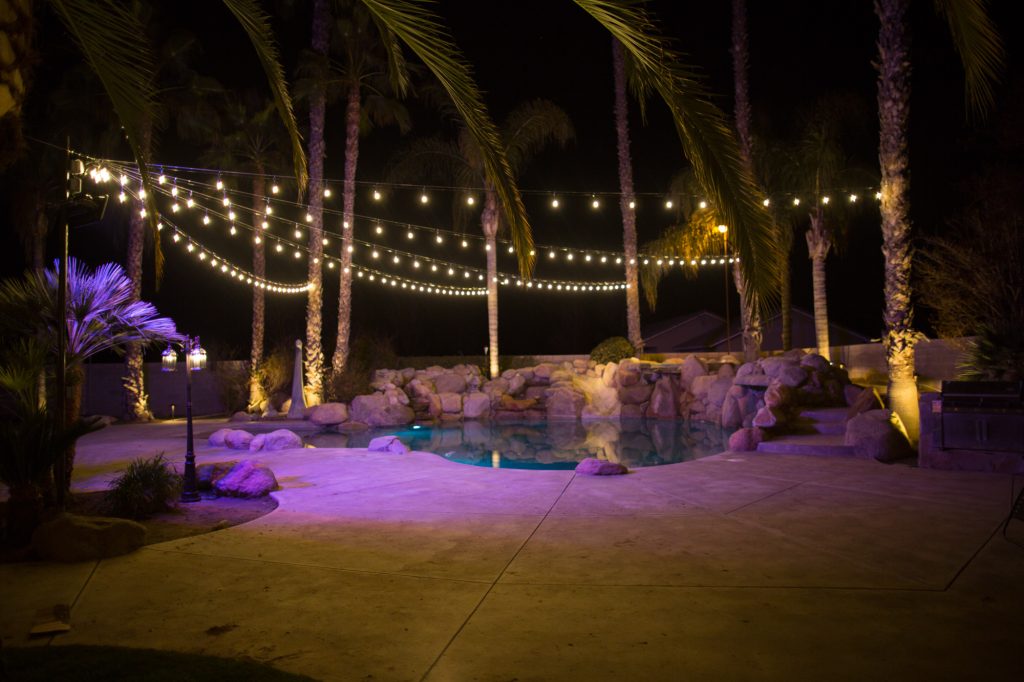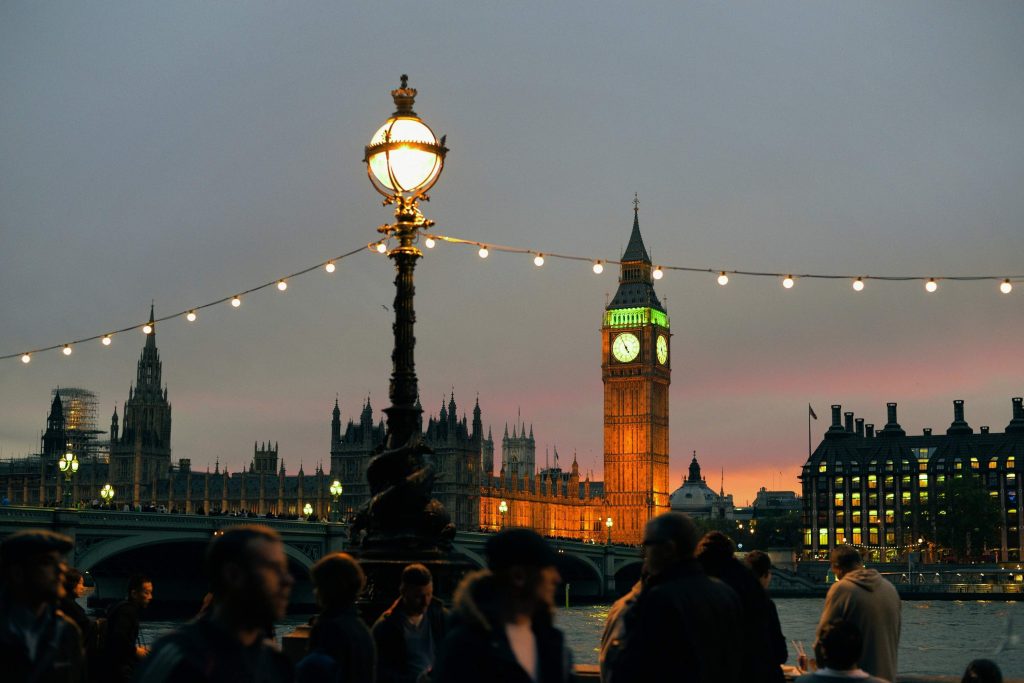Optimal Spacing Guide for Outdoor String Lights Installation
Introduction to Outdoor Lighting with String Lights
Outdoor string lights, often an integral part of landscape lighting, have steadily gained popularity due to their ability to create an inviting ambiance and enhance the aesthetic appeal of spaces. These luminous adornments can transform a mundane outdoor area into a magical setting, whether it’s a backyard patio for intimate summer dinners or a large garden for festive gatherings.
Commonly known as patio or garden lights, these twinkling marvels come in various shapes and sizes – from tiny fairy lights to larger globe bulbs. The enchanting glow they cast upon nightfall effortlessly brings life to the outdoor landscape. They are not just ornamental, though; these lights also serve practical purposes such as illuminating paths and enhancing security.
The Art and Science of Spacing Outdoor String Lights
While it’s easy to get lost in the romantic concept of landscape string lights draped over your outdoor settings, there’s more than just aesthetics at play here; functionality is equally crucial. One key factor that determines both these aspects – beauty and functionality – is the spacing between each bulb on your string light.
The proper spacing of outdoor string lights can make or break its effect on your landscape lighting design. Too close together, the bulbs may produce overly bright light, resulting in an intense glare instead of providing gentle illumination. On the other hand, if spaced too far apart, they might leave patches of darkness disrupting uniformity while diminishing their charm.
It’s essential to strike a balance where your landscape string lights are spaced just right – illuminating your space effectively while still maintaining their enchanting allure. This ideal distance varies depending on numerous factors such as bulb size or type and area size, which we will delve into later in this post.
Importance of Proper Spacing: Achieving Harmony in Light
Just like notes in music that need appropriate intervals to create pleasing melodies, the bulbs in your outdoor string lights need suitable spacing to achieve harmonious landscape lighting. This isn’t just about aesthetics; it’s also about functionality and safety.
Proper spacing ensures that the light is evenly distributed, preventing any dark or overly lit spots that could lead to accidents. Moreover, it extends the life of your bulbs by preventing overheating, which happens when bulbs are placed too close together.
Correctly spaced lights will not only keep your outdoor area safe, but they will also make it look larger and more inviting. The strategic placement of landscape string lights can draw attention to specific features like a pool, walkway, or gazebo while masking less attractive areas, thereby transforming your outdoors into a picturesque space.
Understanding how far apart outdoor string lights should be is an essential facet of effective landscape lighting. Ensuring the correct spacing requires a blend of aesthetic judgment and practical considerations – a topic we’ll delve deeper into as this article unfolds.
Understanding Outdoor String Lights
The Intricacies and Purposes of Outdoor String Lights
Outdoor string lights, often referred to as landscape string lights, are a crucial element of outdoor aesthetics and functionality. They are designed not only to illuminate exterior spaces but also to contribute significantly to the overall ambiance. These lights come in various shapes, sizes, colors, and brightness levels, making them suitable for various applications.

Whether you’re looking to make your backyard cozier for evening gatherings or need landscape lighting that accentuates the architectural beauty of your house, outdoor string lights are remarkably versatile. The purpose of these string lights extends beyond mere illumination; they help in creating a particular mood or atmosphere.
Be it an intimate dinner on the patio under the soft glow of string lights or a vibrant garden party with colorful bulbs, each occasion could be enhanced by choosing the right type of outdoor string lights. They also contribute towards safety by ensuring well-lit walkways and steps, thus reducing chances of tripping or mishaps.
Varieties of Landscape String Lights: Understanding the Differences
When it comes to outdoor lighting solutions, there’s an array of bulb types at your disposal. From traditional incandescent bulbs to energy-efficient LED bulbs and eco-friendly solar-powered options, each serves different needs and preferences.
The Traditional Charm: Incandescent Bulbs
Incandescent bulbs are the traditional choice for many when it comes to outdoor string lighting. These bulbs provide a warm glow that can create an inviting ambiance in any space, making them perfect for romantic dinners or cozy gatherings where soft lighting is desired. Despite their charm, incandescent bulbs have lower energy efficiency compared to other bulb types like LEDs. This means they consume more power per unit of light emitted, which may lead to higher electricity bills if used extensively.
The Energy-Efficient Star: LED Bulbs
LED bulbs, on the other hand, are a modern and efficient solution for landscape lighting. Known for their energy efficiency and longevity, LEDs use significantly less power to emit bright light compared to incandescent bulbs. This makes them an ideal choice for homeowners who wish to reduce their energy consumption without compromising the brightness of their landscape string lights.
Another major benefit of LED bulbs is their durability and resistance to harsh weather conditions. They can withstand rain, snow, wind, and extreme temperatures better than most traditional bulb types, making them a reliable option for year-round use.
The Eco-Friendly Option: Solar-Powered Bulbs
Solar-powered bulbs are the epitome of sustainability in the realm of outdoor lighting. As the name suggests, these utilize solar energy to power themselves up, which means they don’t contribute towards your electricity bills at all. During the day, these lights harness sunlight through integrated solar panels and store it in batteries. Once dusk settles in, they automatically switch on using this stored energy, thus providing an eco-friendly lighting solution.
Apart from being cost-effective in the long run, solar-powered string lights also help reduce carbon footprints, making them a favorite amongst environmentally conscious homeowners. However, they depend heavily on sunlight exposure, so they might not be as effective during cloudy days or if placed in shaded areas.
The Art and Science of Spacing: Factors Influencing the Spacing of Outdoor String Lights
The proper spacing of outdoor string lights is not an arbitrary decision but rather depends on a multitude of factors. One primary consideration is the size and type of the bulb used.
Generally speaking, higher wattage bulbs or those that emit substantial light often require more space compared to their lower wattage counterparts. Larger bulbs, owing to their high luminosity, can be spaced further apart without compromising on the overall lighting effect. Conversely, smaller bulbs tend to create a more intimate and cozy atmosphere when placed closer together.

Another vital determinant is the size of the area or space to be illuminated. A larger area may necessitate closer bulb spacing for adequate lighting, while a smaller space can afford more extensive separation between lights. It’s a delicate balance between aesthetic appeal and practicality – too close may seem cramped; too far apart can leave areas in darkness.
The desired brightness level also plays a significant role in determining string light spacing. If you’re aiming for soft mood lighting, wider spacing might be suitable, whereas for landscape lighting that requires greater visibility, like walkways or patios, a closer arrangement would serve better.
Safety considerations are paramount in outdoor lighting setups like landscape string light installations. Overcrowded wiring from closely spaced bulbs can lead to overheating issues, posing serious safety risks such as fire hazards or electrical shocks.
One Size Doesn’t Fit All: General Guidelines on Spacing Outdoor String Lights
In regards to standard spacing for different types of bulbs, there’s no definitive rule, as it largely depends on individual preferences and need-based requirements.
However, industry conventions suggest that standard residential incandescent bulbs should generally be spaced about 10-15 feet apart because they emit intense light; LED lights, being energy-efficient and bright, can be placed closer at about 8-10 feet; and solar-powered bulbs, due to their lower luminosity, might require even closer spacing.
Adjusting the spacing for desired brightness and aesthetic appeal is an art that one hones over time. You can play around with the distances between the bulbs to create your desired ambiance. For instance, a romantic setting might call for closely spaced bulbs emitting soft light, whereas an outdoor party might need more dispersed, brighter lights.
Safety considerations in spacing cannot be overstated. It’s crucial to ensure that each bulb has ample space around it for heat dissipation. Also, securing the strings tightly is of utmost importance to prevent any loose hanging wires that could potentially cause accidents.
Let’s Get Specific: Detailed Discussion of Decorative Spacing by Bulb Type
When it comes to decorative incandescent bulb spacing, they are traditionally bright and radiate a warm glow. While this makes them perfect for creating a cozy atmosphere, their high power consumption and heat generation necessitate wider spaces between each bulb – typically around 18 inches apart.
The LED landscape lighting revolution has brought energy-efficient and bright bulbs. They are cooler and safer compared to incandescents, making them perfect for closer placements of about 12 inches apart without any safety risks. This close placement also compensates for the lower brightness.
Solar-powered bulb spacing offers an eco-friendly lighting solution but requires abundant sunlight exposure throughout the day to function optimally during nighttime. Their lower luminosity often warrants placing them as closely as possible – around 6 inches apart – especially in areas where direct sunlight is sporadic or minimal.
A Picture Speaks Louder than Words: Case Studies
Intricate examples have been documented of different spacings with various types of bulbs to ease your decision-making. These demonstrate how minute adjustments in spacing can drastically alter the overall ambiance, irrespective of the bulb type used. Real-life case studies further depict how proper or improper light placement can significantly impact the overall aesthetic appeal and functional value of a space. These present an insightful collection of do’s and don’ts that serve as powerful learning tools.
Mastering the Luminous Canvas: Tips and Tricks for Perfectly Spaced Outdoor String Lights
DIY methods for measuring accurate distances between lights include using a yardstick or a length of string marked at your desired intervals. This can help in achieving consistent spacing across an entire stretch without any haphazard placements.
Alterations in lighting during special occasions or events are well within your control as you become proficient with adjusting spacings for desired effects – be it festive brightness or romantic softness.
Maintenance tips to ensure consistent light distribution involve regular cleaning to prevent dust buildup that can dim lights over time, regular checks on wiring, bulbs, and power connections to identify potential safety issues, and prompt replacement of any malfunctioning bulbs.
Conclusion: How Far Apart Should Outdoor String Lights Be?
The artful arrangement of landscape string lights can transform any outdoor space into a picturesque panorama, full of warmth and a welcoming glow. Behind this captivating tableau lies meticulous planning and careful consideration regarding the spacing between each glowing dot. Understanding these nuances is akin to holding the paintbrush with which you will paint your luminous canvas – creating landscapes that inspire awe while nurturing memories under their gentle glow.
You may also be interested in the following posts:
